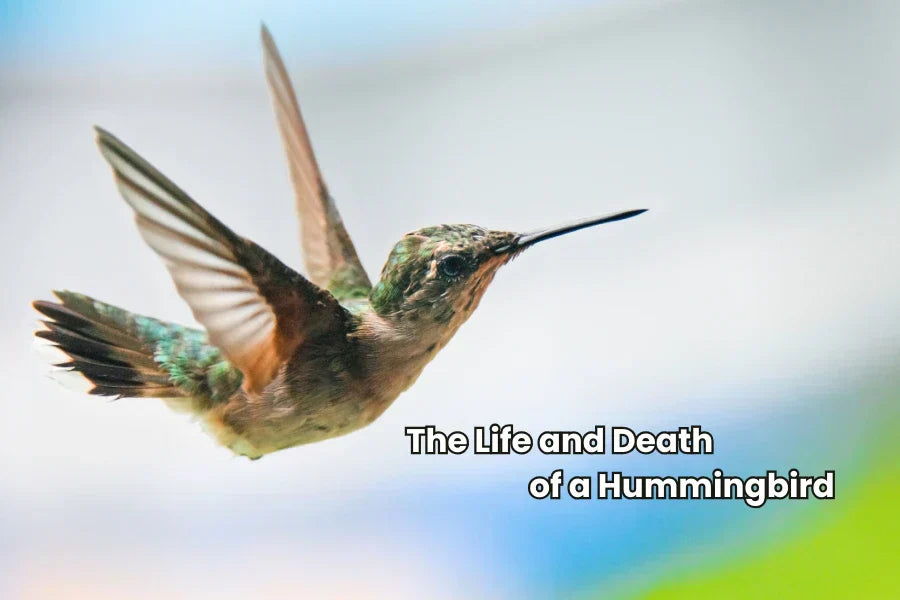The 10 Birds That Migrate the Longest Distances
Migration is a fascinating phenomenon that illustrates the incredible abilities of birds in terms of their stamina and orientation of different kinds of birds. It is a reality that many birds move from one region to another in migration, each covering a distance of several thousand kilometers, mainly in the search for breeding or wintering quarters.

In this article, readers will be informed about 10 birds of long-distance migration, their unique journeys, their paths, and the science of mapping such incredible achievements.
Bird Migration Introduction
Before knowing about these ten birds, here are some critical details about bird migration you should understand.
What Is Bird Migration?
Bird migration refers to a constant, cyclical, or irregular pattern of movement of birds from one geographic location to another or from one breeding, molting, or wintering ground to another in response to biotic or abiotic factors like temperature or food.
Types of Bird Migration
There are several types of bird migration:
- Long-Distance Migration: Birds that commute between breeding and wintering areas, often on different continents or other parts of the world.
- Short-Distance Migration: Birds that travel only slightly across the duration of a season or geographic areas of the same latitude.
- Partial Migration: It is well-known that some members of a given population are migratory, and some are sedentary at certain times of the year, depending on factors such as climate and food supply.
Reasons Why Birds Migrate
Bird migration primarily occurs for two reasons: to locate proper habitats for reproducing and to localize zones where there is enough food for them. Birds during the breeding period prefer to be within areas that will support the raising of their young ones.
In extreme cases of such conditions, the birds may be forced to look for other places with better living conditions than the present weather conditions as seasons change.
How Scientists Track Bird Migration
Monitoring bird migration uses different scientific approaches. These are bird banding, GPS, and satellite telemetry to track migratory movements.
Bird banding, in which a light, adjustable band is placed around the bird's leg, allows researchers to follow the particular movements of unique birds and collect relevant information.
Importance of Tracking Bird Migration
Monitoring bird movement is vital for several reasons, including ecological and other research and the conservation of birds and their habitats. Observations of migratory behavior help provide information on birds' reactions to the existing conditions and an understanding of how they migrate.
Which Bird Migrates the Longest Distance?
Now, let us share these ten birds that migrate the longest distances.
1. Arctic Tern
The Arctic Tern is considered to cover a considerable distance, as is its migration of up to 71,000 km or 44,000 miles in a year. This bird breeds in the Arctic during the northern summer and flees to the Antarctic during the southern summer, following a roundabout route in search of food and suitable conditions.

Their movement is between the Arctic and the Antarctic, between one season and the other, in a cycle that climate change has interfered with.
2. Sooty Shearwater (Ardenna grisea)
The Sooty Shearwater is another champion traveler, flying up to 64,000 km (40,000 miles) each year. These seabirds nest in New Zealand and Chile, then head to feeding grounds in the North Pacific, reaching as far as Alaska and Japan.
Their figure-eight migration route allows them to exploit rich feeding areas across hemispheres. Unfortunately, overfishing and warming oceans pose risks to their traditional food sources.
3. Short-tailed Shearwater (Ardenna tenuirostris)
The Short-tailed Shearwater migrates up to 30,000 km (18,600 miles) annually. They breed in southern Australia before flying north to the Bering Sea and Kamchatka Peninsula for feeding.
4. Bar-tailed Godwit (Limosa lapponica)
The Bar-tailed Godwit holds the record for the longest bird migration without stopping, with some individuals traveling 12,000 km (7,500 miles) without resting. They breed in Alaska and fly directly to New Zealand or Australia.
This nonstop journey requires birds to nearly double their body weight in fat reserves beforehand.
5. Red Knot (Calidris canutus)
The Red Knot makes annual migrations of up to 15,000 km (9,300 miles) from Arctic breeding grounds to wintering areas as far south as Tierra del Fuego.
Their survival depends on stopover sites, particularly Delaware Bay in the United States, where they feast on horseshoe crab eggs to fuel their journeys.
6. Northern Wheatear (Oenanthe oenanthe)
Despite its small size, the Northern Wheatear migrates up to 14,500 km (9,000 miles) each year. Birds breeding in Alaska cross Asia to reach Africa, while those in Europe and Greenland also winter in sub-Saharan Africa.
7. Swainson’s Hawk (Buteo swainsoni)
Swainson’s Hawks breed across North America and migrate up to 12,000 km (7,500 miles) to winter in Argentina. They travel in massive flocks called "kettles," sometimes numbering in the tens of thousands.
During migration, they rely on thermal air currents to soar with minimal energy expenditure.
8. Common Swift (Apus apus)
Typically flying from 8000 to 10000 kilometers (5000 to 6200 miles) a year, the Common Swift. It migrates from Europe down to Africa during the winter.
He recalls the migration as movement from the breeding places of Europe to the wintering grounds of Africa during the cold seasons.
9. American Golden-Plover (Pluvialis dominica)
The American Golden-Plover migrates around 8,000 km (5,000 miles) from Arctic Canada and Alaska to South America. Some individuals fly nonstop over the Atlantic, from Nova Scotia to Brazil.
10. Albatross (Wandering and Other Species)
Albatrosses, particularly the Wandering Albatross, are legendary for their vast journeys across oceans. They may travel up to 120,000 km (75,000 miles) in a single year while foraging.
Share


























